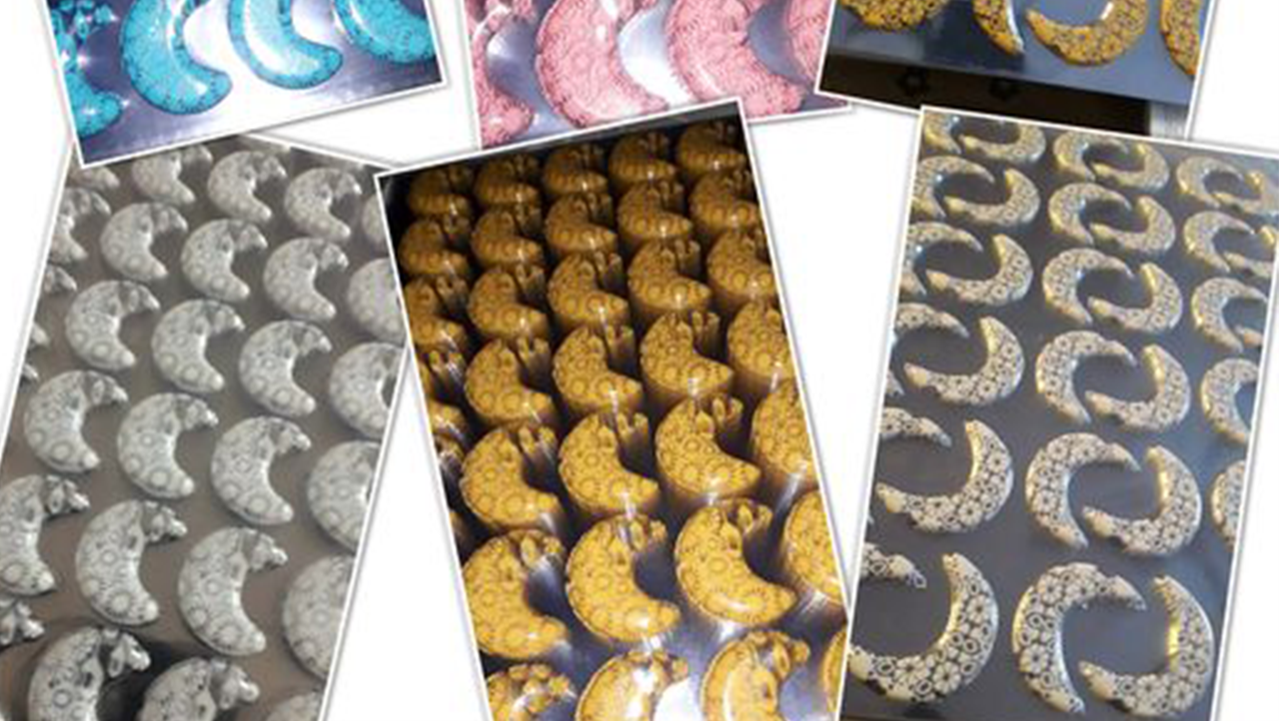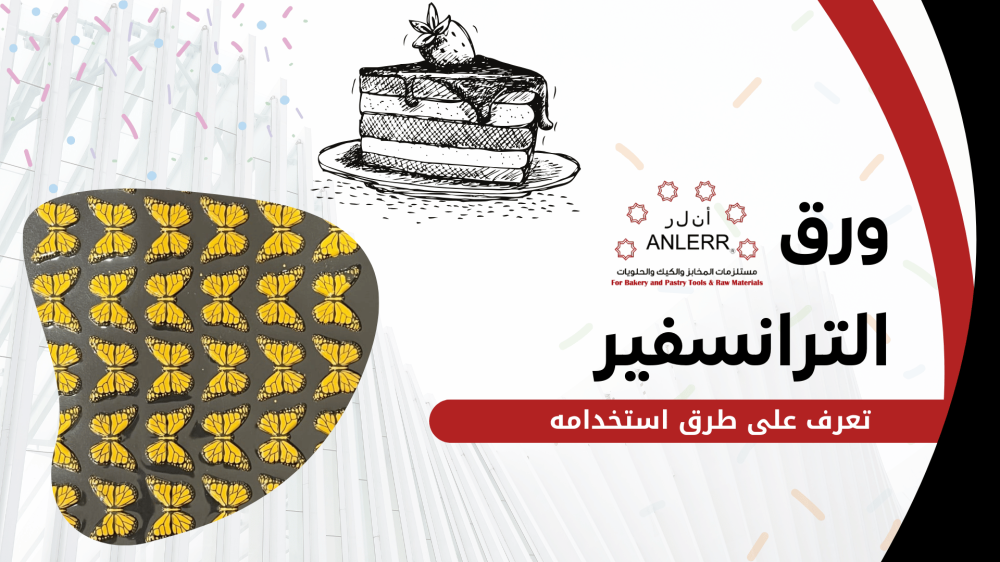How to Use Transfer Paper
Decorating desserts is considered an essential element for increasing their visual appeal, and this is where transfer paper comes into play. It adds a beautiful and professional touch to the surface of desserts. By using transfer paper, innovative designs and intricate patterns can be easily transferred onto cakes and chocolates, turning sweets into eye-catching artistic pieces.
What is Chocolate Transfer Paper and How is it Used?
Chocolate transfer paper is a special type of paper used to transfer designs and patterns onto the surface of chocolate, giving desserts an attractive and professional appearance. This paper features a layer that melts when placed on melted chocolate, allowing the design to transfer perfectly after cooling. It is commonly used for cake and dessert decoration.

Types of Transfer Paper Used in Desserts and Baked Goods
The types of transfer paper used in desserts and baked goods include:
Chocolate Transfer Paper – Specifically used for designs on chocolate surfaces.
Sugar Transfer Paper – Designed for sugar decorations.
Edible Transfer Paper – Safe for consumption and can be used directly on desserts.
Each type serves the purpose of transferring unique designs onto the surface of desserts. Transfer paper adds a unique decorative touch to cakes and other desserts and is known for being easy to use and customizable to suit personal preferences.
Steps to Professionally Use Transfer Paper in Baked Goods
Using transfer paper to decorate baked goods adds a professional touch and distinctive appearance that catches the eye. To achieve the best results, it is recommended to follow precise steps to ensure the quality and stability of the design on the desserts. Here are the basic steps for professional use:
Preparation and Cutting: Start by cutting the transfer paper to the desired size to fit the design you want on the surface of the baked goods.
Placing the Paper: Place the transfer paper on the melted chocolate or dough, pressing gently to ensure the paper adheres firmly and stays in place.
Cooling and Removal: Allow the baked goods to cool completely, and then carefully remove the paper slowly to ensure the design is transferred clearly and accurately.
By following these steps, you can achieve professional and visually appealing results that add artistic and aesthetic value to baked goods, making them more attractive and unique.
The Best Store for Transfer Paper and Cake Supplies – Anler Store
Anler Store is one of the most prominent stores specializing in transfer paper and cake and dessert supplies. The store offers a wide variety of high-quality products that cater to the needs of both professional bakers and hobbyists in the art of dessert-making.
Common Mistakes When Using Transfer Paper and How to Avoid Them
Transfer paper is an effective tool for decorating desserts and cakes, but certain mistakes may occur during its use, potentially affecting the final result's quality. It is important to identify common mistakes to avoid them and achieve professional results.
Common Mistakes to Avoid:
Not Adjusting the Appropriate Temperature:
Ensure that the temperature of the chocolate or dough is suitable so that the design adheres well.
Not Pressing the Paper Firmly Enough:
If the paper is not pressed adequately, the design may not transfer clearly onto the dessert surface.
Removing the Paper Too Quickly:
Transfer paper should be removed slowly after the cooling process to ensure the design remains clear and intact.
Using the Wrong Type of Paper:
Ensure you select transfer paper suitable for the type of dessert you are decorating.
By avoiding these common mistakes, you can achieve impressive and professional results when using transfer paper for dessert decoration, adding an elegant touch to your final creations.
Tips for Improving the Appearance of Desserts Using Transfer Paper

Choose Designs Suitable for the Occasion:
Select designs that align with the type of event. For example:
Elegant patterns for weddings.
Colorful and cheerful designs for birthdays.
This helps create a unique and special touch for every occasion and enhances the desserts' visual appeal.
Ensure the Quality of the Paper Used:
High-quality transfer paper ensures the design's clarity and cohesion on the dessert's surface. Choose paper that matches the type of dessert being decorated, as quality directly affects the final appearance.
Experiment with a Small Quantity First:
To avoid potential mistakes, it is recommended to test the design on a small piece of chocolate or cake before applying it to the entire batch. This step ensures accuracy and stability before mass production.
Clean and Smooth the Dessert's Surface:
Before applying transfer paper, ensure that the dessert's surface is clean and smooth to allow proper adhesion. A well-smoothed surface ensures even and clear design transfer.
Creative Ideas for Using Transfer Paper in Dessert Making
Create Custom Patterns Reflecting a Personal Touch:
Design unique patterns that tell a story or reflect the personality of the dessert's owner. Adding a personal touch makes the desserts feel unique and special.
Use Transfer Paper for Transparent Layers:
Experiment with transfer paper on thin layers of chocolate or gelatin to achieve transparent and visually appealing effects. This technique adds depth and uniqueness to desserts.
Decorate Individual Chocolate Pieces as Additional Accents:
Print small designs on individual pieces of chocolate and use them as decorative elements on cakes or other desserts. These decorated pieces provide an elegant and attention-grabbing addition to the presentation.
Mix Colored Designs for Diverse Visual Effects:
Use transfer paper with different colors and designs to create a variety of visual effects on the dessert's surface. This idea adds an artistic touch to desserts, making them stand out with vibrant and appealing colors.
What is the Difference Between Sublimation Printing and Transfer Printing?
Sublimation Printing:
This method uses heat to turn ink into gas, allowing it to bond with fabric fibers. Sublimation is ideal for printing on white polyester fabrics. Its main advantages include:
- Long-lasting colors.
- Resistance to fading even after repeated washing.
Transfer Printing:
This method uses special paper placed on the surface and transfers the design using heat. Transfer printing is versatile, suitable for a variety of materials such as paper, plastic, and even chocolate. However, it is less durable and may not be as resistant to wear and washing compared to sublimation, especially on fabric surfaces.
Conclusion
Transfer paper is a creative and distinctive way to add professional artistic touches to desserts and baked goods, making them more appealing and unique. By following the correct steps and avoiding common mistakes, you can achieve impressive results that reflect the skill and creativity of the dessert maker.

